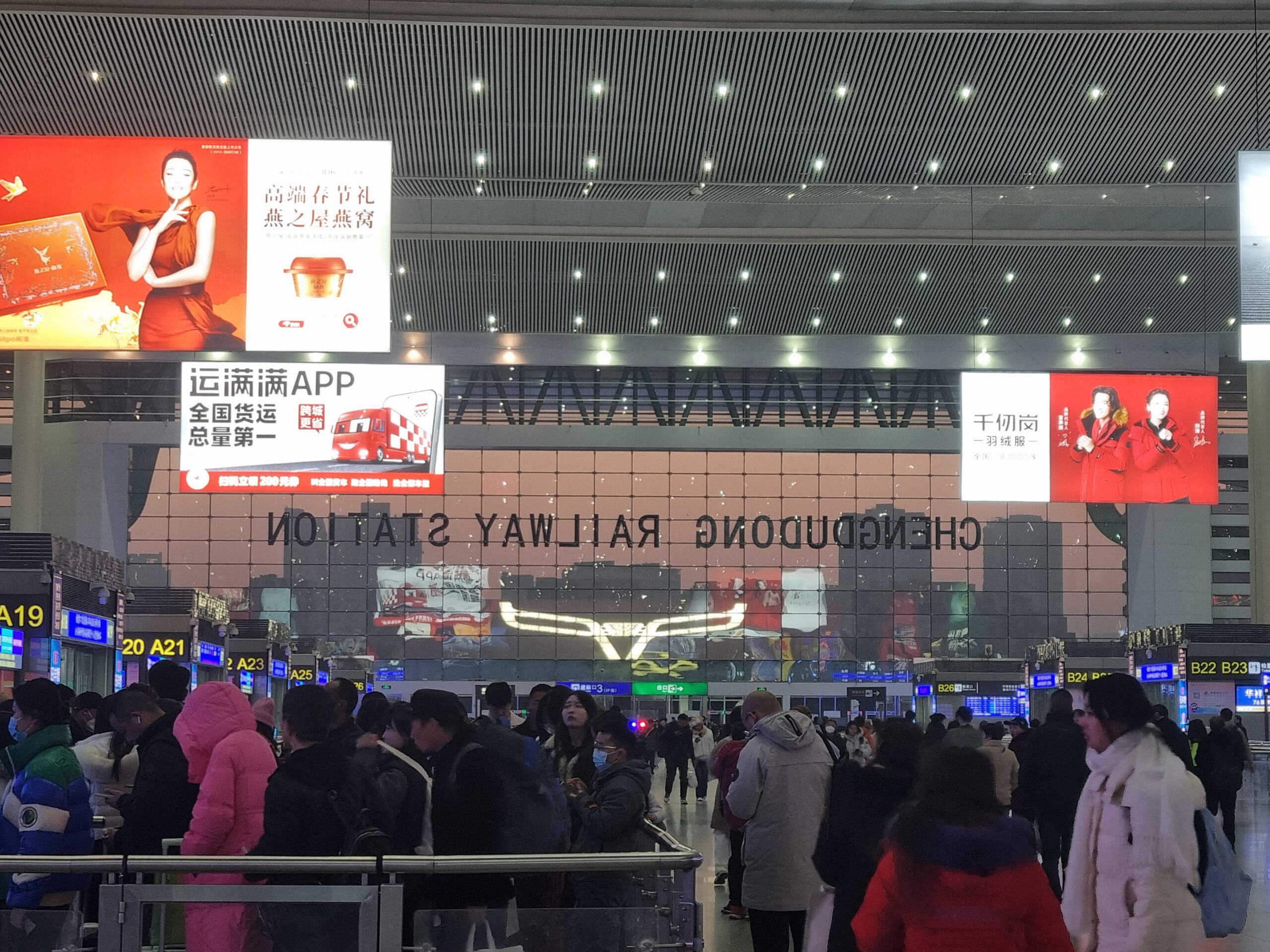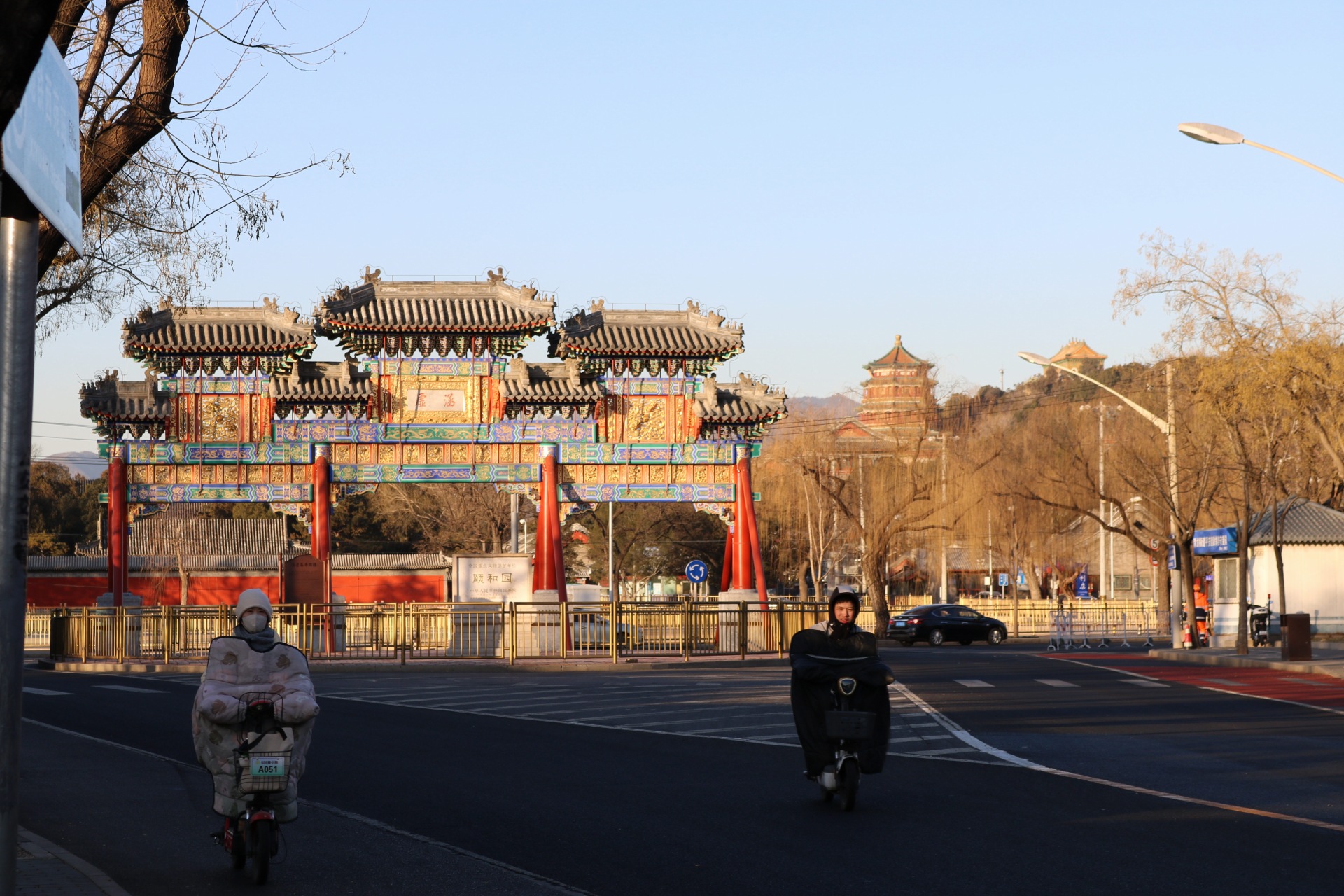Navigating public transportation in China might seem daunting at first due to the language barrier and unfamiliar booking systems. However, with some basic knowledge, it quickly becomes straightforward and convenient, making it easy to explore the country.
Trains
Official Train Booking System (12306.cn)
The official site, 12306.cn, is commonly used by locals and is simple to use – after your account is accepted. The website has an English-language option, and you must register your passport details to create an account. This might take a while to get sorted, so make sure to do this some days in advance. In our experience, while they do have an English version of the app, this does not contain all functionalities. In the end, we always used the original version, even during the creation of our accounts. We had some troubles when creating our account for 12306.cn, as our passport verification step kept getting denied, but after several attempts, it got accepted!
Tickets become available 15 days in advance. Popular routes sell out fast, especially during Chinese holidays, so booking early is important. Even outside of the holiday season, we had some trains sell out right in front of our eyes, even when having checked tickets the minute the bookings opened… This is one of the reasons people opt to book with Trip.com.
Alternative Booking Platform: Trip.com
Trip.com is very convenient for non-Chinese speakers. It offers English service and accepts international payment methods. The platform charges a small booking fee but provides good customer support and booking reminders. The advantage of booking trains through Trip.com is that you can pre-book tickets, even before the tickets are published officially. This means that you don’t have to be online the minute tickets are released, and it can reduce the stress of booking tickets.
After booking on Trip.com, you’ll receive an e-ticket or a pickup number. Present your passport at the station ticket window or a ticket machine to collect your physical ticket.
Train types & models
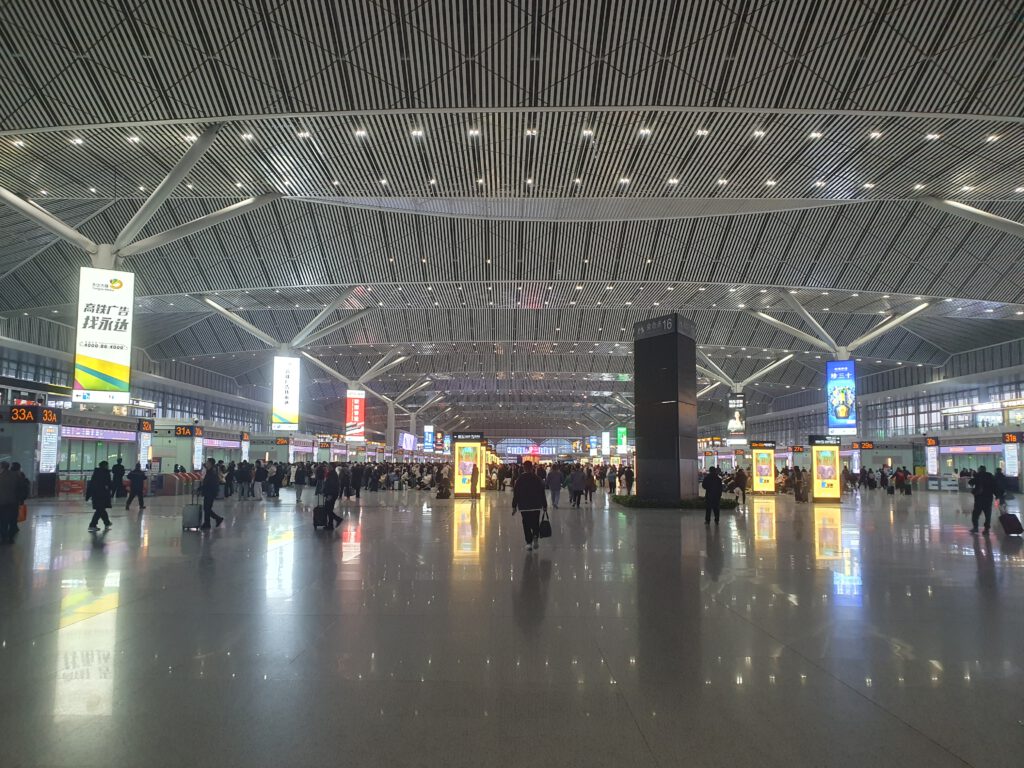
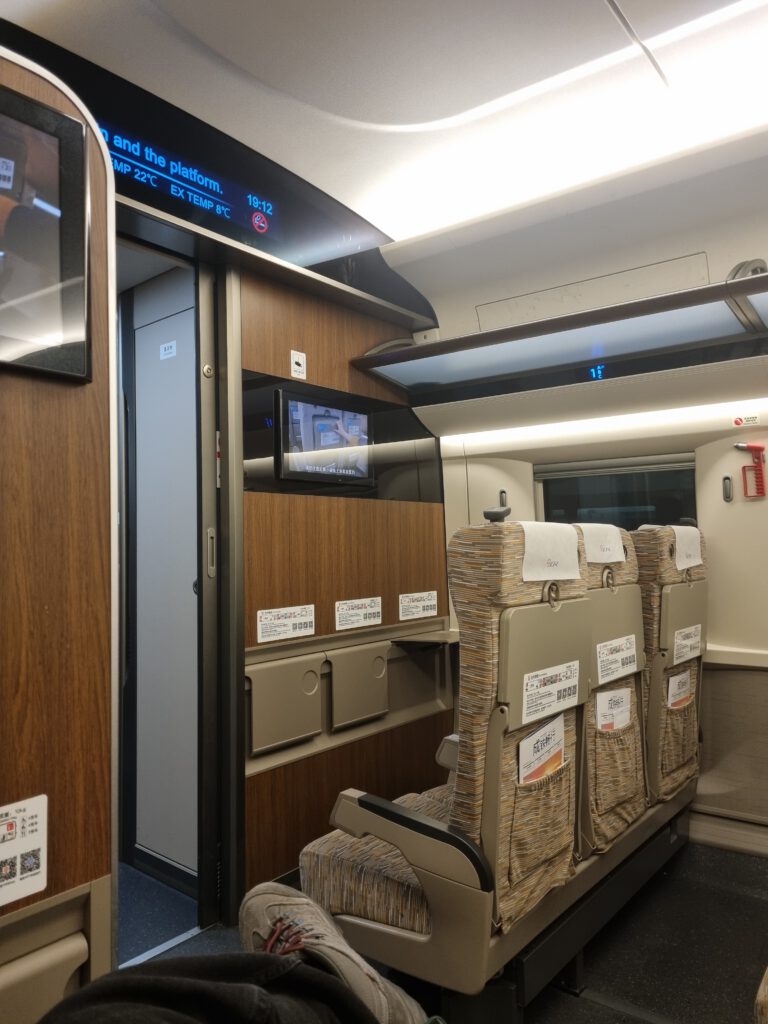
Xi’An Train Station & Train model G89 from Xi’an North (西安北站) → Chengdu East(成都东)
In the three weeks that we travelled through China, we’ve been on many trains of different sizes & luxuries. Whenever possible, we tried to take night trains to avoid losing time travelling during the day. Most of the time, there were three categories you could choose between when booking these trains: normal seats, 6-sleepers, or 4-berth cabins. I’ve also heard that in some specific lines, there are also 2-bed cabins, but for the routes we were booking, we didn’t see this option.
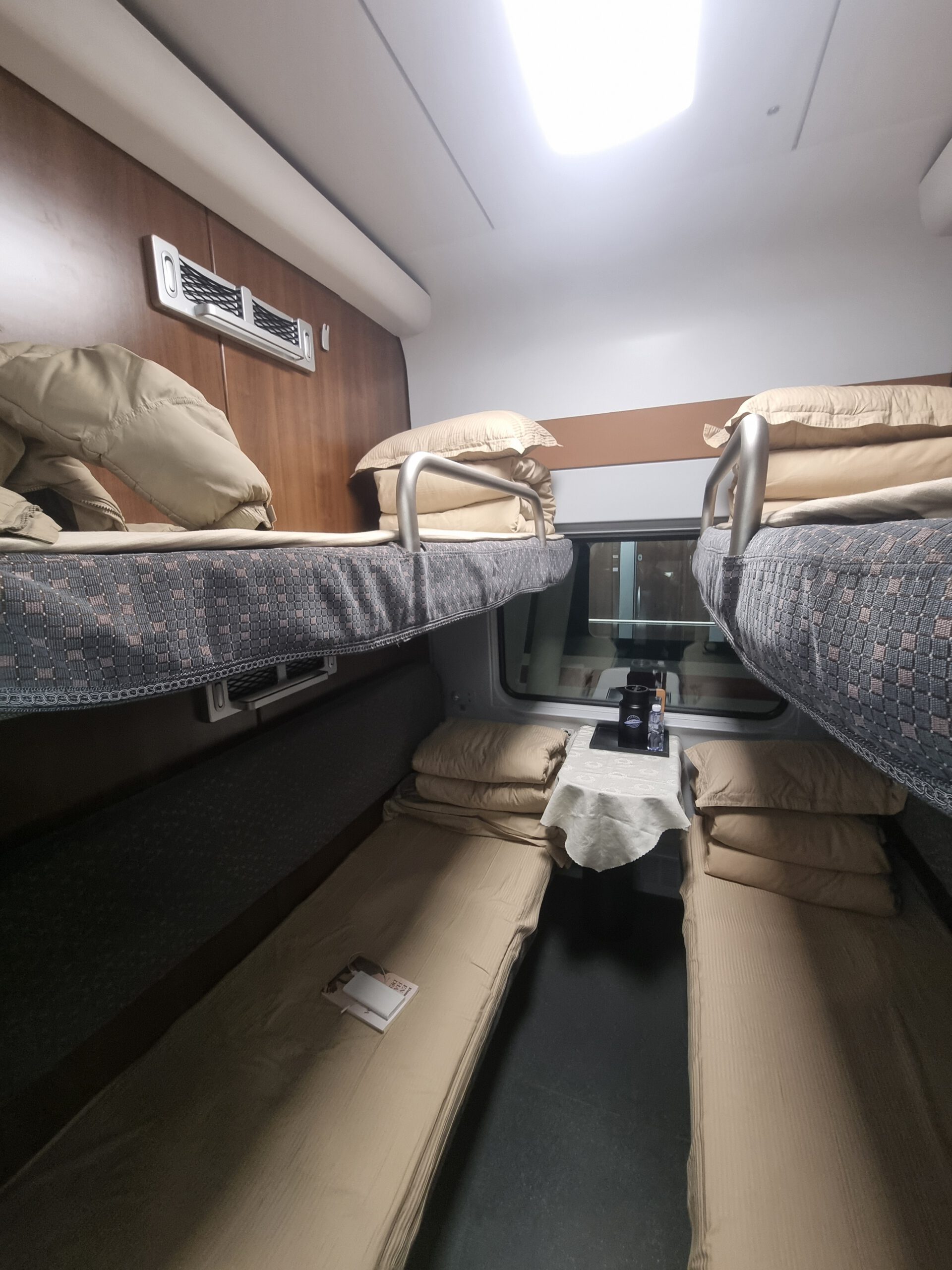
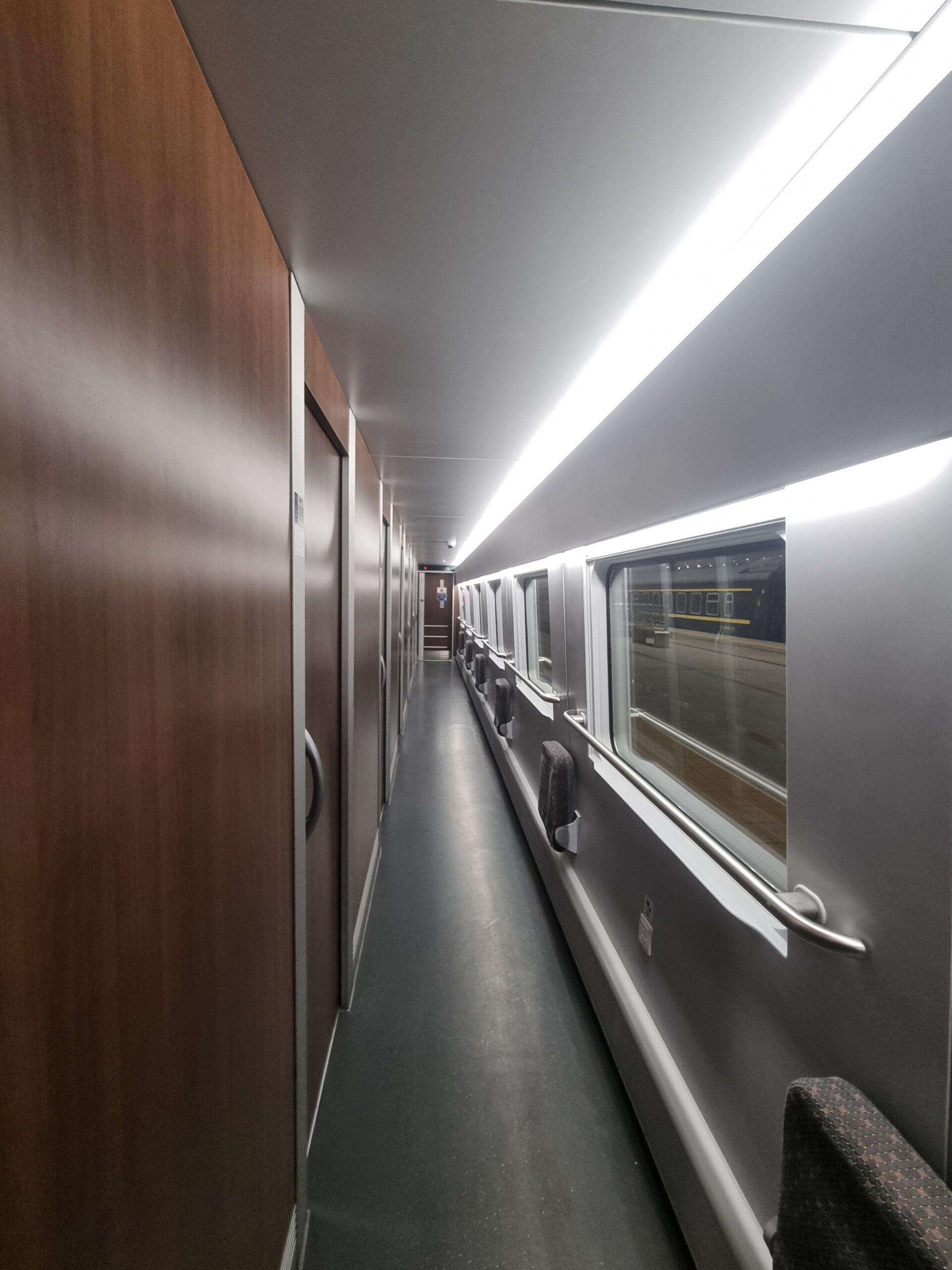
1st Class Sleeper on Night Train D43 from Beijing West (北京西) → Xi’an (西安)
We always tried to pick the 4-berth cabins, as the 6-bed sleepers are in an open hallway. Since we were taking quite some night trains, we wanted to ensure that we would get some proper rest.
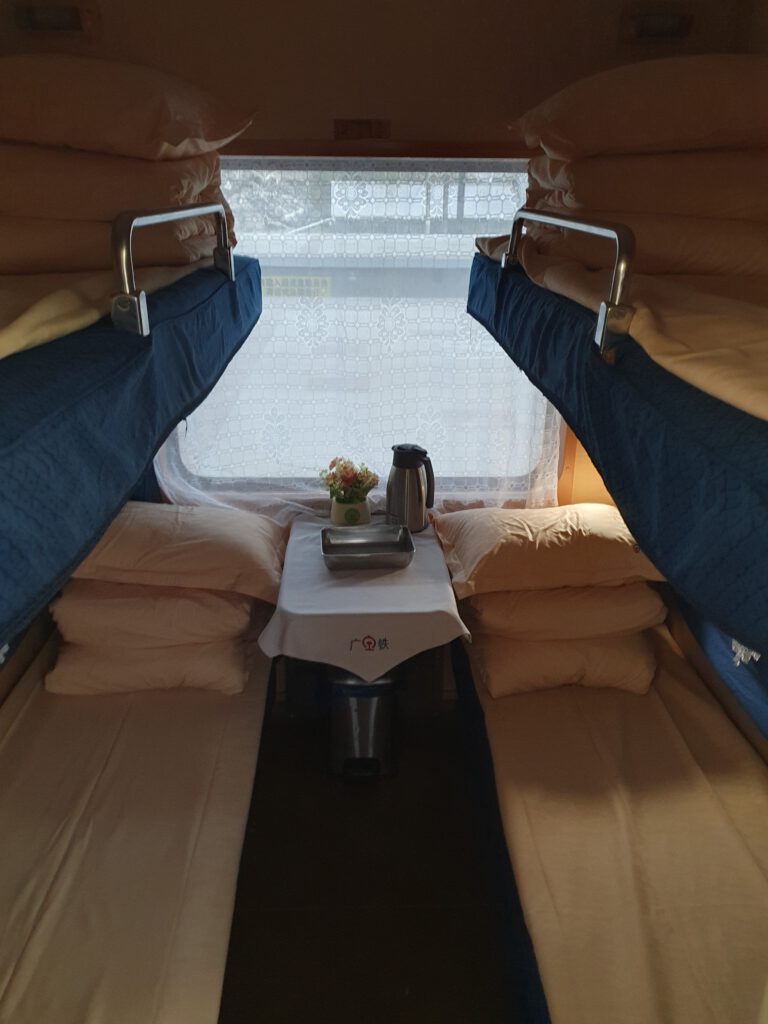
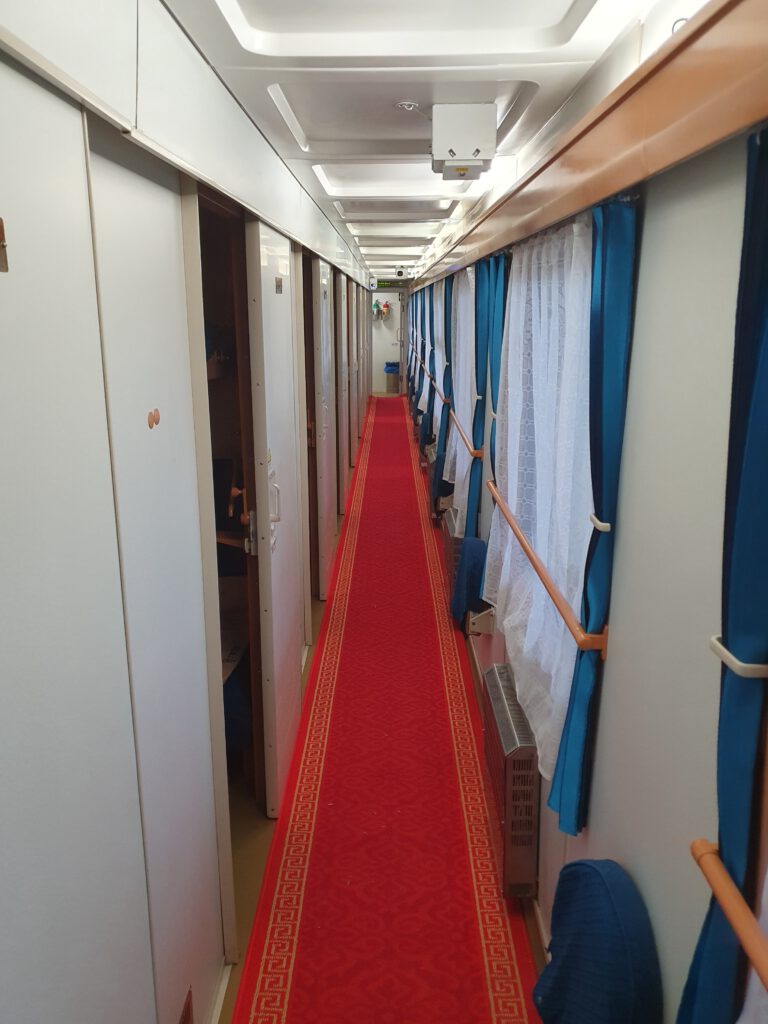
Soft sleeper on Night Train K687 from Zhangjiajie West (张家界西) → Guangzhou North (广州)
Navigating the Train stations
Train stations in China are huge! Throughout our trip, we kept being surprised by the size and number of gates and train tracks in each station. Especially the first time we took the train in Beijing West, it took us a little time to navigate. Luckily for us, all signs and electronic boards were in both Mandarin and English. So, just make sure you arrive at least 1 hour in advance!

Like many places in China, it is mandatory to first go through a security check before entering the station. After that, depending on the size of the station, there might be different waiting rooms, so make sure to check the electronic boards for information. Usually, 30 minutes before the arrival of the train, the ‘check-in’ opens, and people line up to scan their tickets and enter the platform.
If you don’t have a Chinese national identification card, it is best to line up for ‘Manual inspection’. Even if you have a QR code, sometimes the machine was not accepting it and we had to switch through the crowds of people to the correct line, so easier just to line up there already!
Metro
Metros in cities like Beijing, Shanghai, Guangzhou, and Chengdu are fast, efficient, and easy to navigate. Most signs and ticket machines include English translations, and announcements are bilingual.
Tickets can be bought from touchscreen machines at every station. Alternatively, if you have AliPay installed and configured, you can easily activate the Metro QR-code for each city. Once you activate the QR-code, you can use this to enter the metro every time, and the price will automatically be deducted from the card that you’ve added. These can save a lot of time and sometimes offer fare discounts.
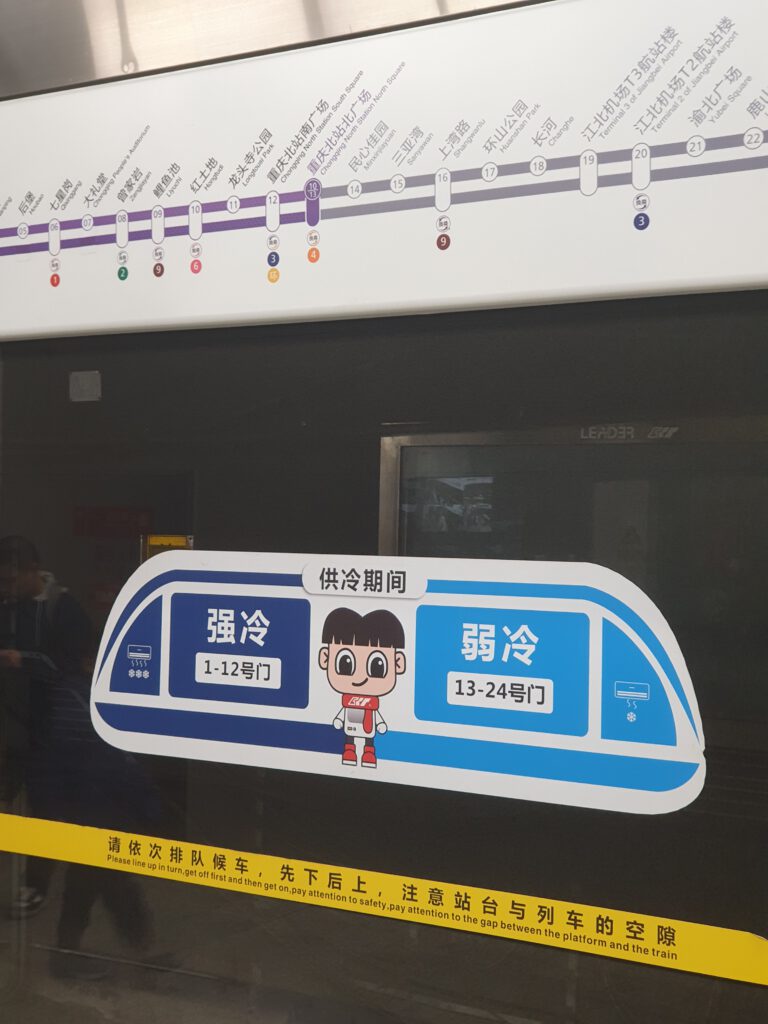
Infographic about different air conditioning temperatures in the metro, Chengdu
